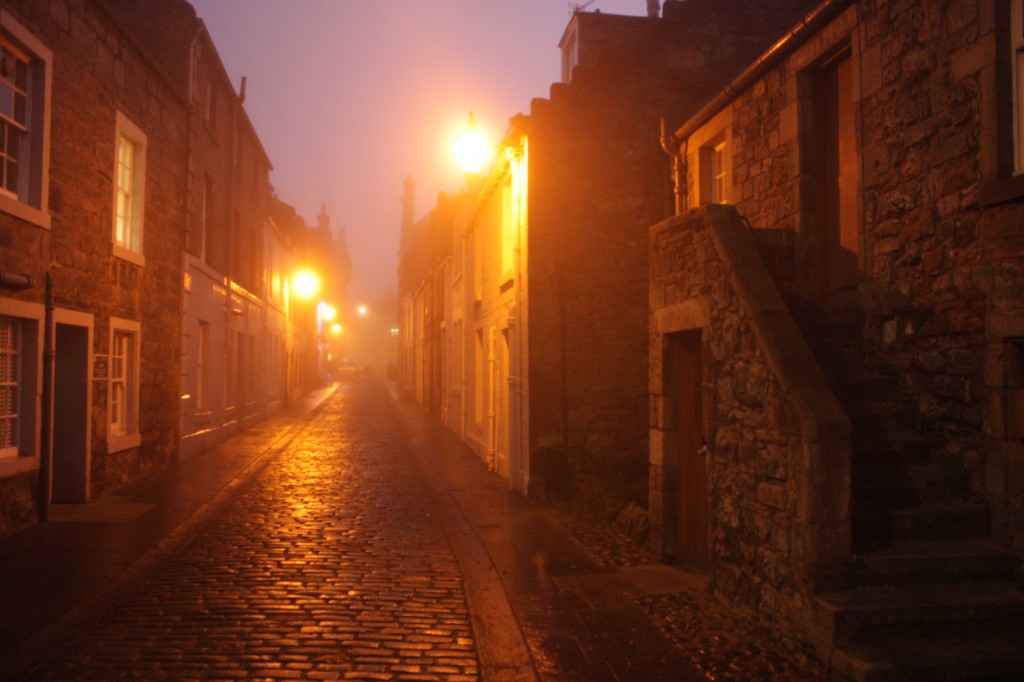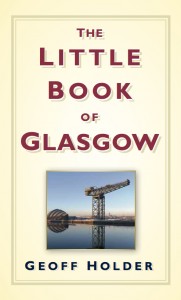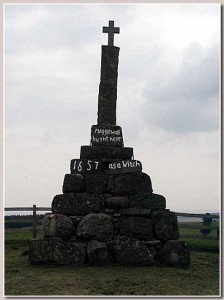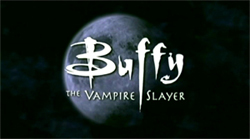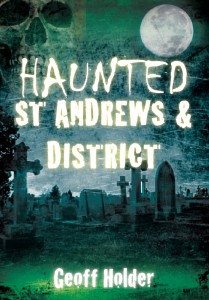In many ways, I distrust a place that has ‘atmosphere’ because it gets in the way of investigation. The imagination takes over and we see and feel – or think we see and feel – evidence of the supernatural. When it may just be our emotional tendency to prefer the crepuscular to the unspectacular.
I’ve been spending time in St Andrews recently, doing fieldwork and library research for Haunted St Andrews and District. Pretty much anyone who writes about this part of Fife – and the east coast of Scotland in general – eventually gets around to the weather. The wind (oh, the wind). The rain. And the haar, or sea-fog. When the haar rolls in off the ocean, the coast can be blanketed in the thick fog, while just a few miles inland the sun can be shining.
The other day I spent several hours at book research. It was sunny when I arrived. But when I quitted the library after dark, the haar was in. And a ghostly atmosphere had settled on the town.
St Andrews is a place of medieval buildings and narrow cobblestoned lanes. In the fog the streetlights glow like gaslamps. Sounds are muffled. Sharp edges become hazy. Arched ruins loom out of the edge of vision. It was like being transported back to a previous century. I almost expected a horse-drawn carriage to clatter out of the gloom. Shades of Jack the Ripper, Sherlock Holmes and Murder by Gaslight. And, perhaps for the first time, I could see why St Andrews has always been regarded as a ‘haunted town’. Once wrapped in its mantle of luminous fog, the ancient fabric breathes an atmosphere of things half-seen and half-feared. An environment of anxiety and anticipation. A place where ghosts might indeed walk.
The next time I visited St Andrews, it was drizzly and dull. I got rain on the camera lens and everything looked flat and grey. No ghostly fingers stroked my imagination this time.

